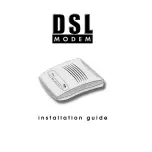
62
www.cooperbussmann.com/wirelessresources
Cooper Bussmann 945U-E Wireless Ethernet Modem & Device Server User Manual
Rev Version 2.14
ARP Filter Configuration
Address Resolution Protocol (ARP) is a broadcast message and is primarily used for finding a MAC address when
only its IP or some other Network Layer address is known. On large networks, you tend to get a high proportion
of broadcast messages. Using ARP filters is useful for reducing broadcast traffic on the wireless network by only
allowing ARP requests for known units to pass, or by blocking ARP requests for high use addresses.
Select “Blacklist” or
“Whitelist”
A blacklist will block ARP requests that match the entry. A whitelist will allow only
ARP requests that match the entry. All other devices are blocked.
Add Entry
Adds a row to the table of ARP address filter rules.
Delete Entry
Deletes the currently selected ARP address filter rule.
Enable
Select this checkbox to enable the rule.
IP Address
This sets the IP address that you wish to filter.
IP Netmask
Sets the IP Netmask.
Save Changes
Saves changes to non-volatile memory (reset is required to activate).
Save Changes and
Reset
Saves to non-volatile memory and restart to activate changes.
3.19 DHCP Client Configuration
DHCP (Dynamic Host Configuration Protocol) allows DHCP clients to automatically obtain their IP address at
startup. This simplifies network administration because there is no need to manually configure each device with a
separate IP address. The 945U-E is able to act as a DHCP client. To set the 945U-E to acquire its IP address from
a DHCP server, select the checkbox “Obtain IP Address Automatically” on the Network Configuration page. When
configured as a DHCP client, the “Device Name” on the Module Information page will be the module identifier (as
the IP address will be unknown), and so should be given a unique name.
3.20 DHCP Server Configuration
The 945U-E is able to act as a DHCP server, supplying IP addresses automatically to other DHCP client devices.
Note that the 945U-E units need to act in conjunction with their connected devices. If a connected device is a
DHCP server, the local and remote 945U-E units can be configured as DHCP clients and receive IP addresses
from the server device. Similarly, if a 945U-E is configured as a DHCP server it can provide IP addresses to DHCP
clients—both 945U-E units as well as other connected devices. Configuration items for the DHCP server are listed
below.
Enabled
Select this checkbox to enable the DHCP server.
IP Range Minimum /
Maximum
The DHCP server will assign IP addresses to DHCP clients from within this range of
addresses.
Gateway
Primary DNS
Secondary DNS
These settings are common to all of the DHCP clients, and refer to the gateway address,
and Domain Name Service (DNS) configuration.
Lease Time
This is the number of seconds the client is granted the assigned IP address. The
client should renew its lease within this time.
3.21 DNS Server Configuration
DNS (Domain Name Service) allows devices to be given human-readable names in additions to their IP address.
This makes identification of devices (hosts) simpler, and makes it possible to identify devices that have been
automatically assigned their IP address by a DHCP server (see “3.20 DHCP Server Configuration”). DNS is the
system that translates Internet names (such as www.cooperbussmann.com/bussmannwireless) to IP addresses.
The ELPRO 945U-E can act as a DNS server for a local network. Name to IP address mapping is automatically
updated by the built in DHCP server when it issues an IP address to a client unit.
















































